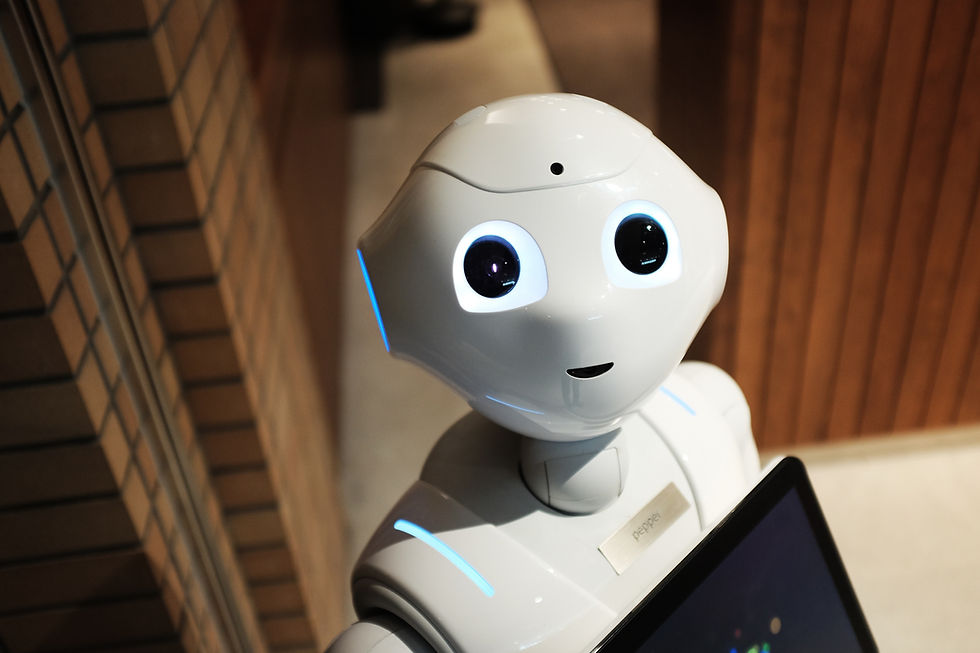Smart Classrooms, Inclusive Futures: How AI is Breaking Down Learning Barriers in K-12 Education
- Dr. Kecia Ray

- Jun 29
- 4 min read

Eight-year-old Emma sits at her desk, struggling to read the text on her worksheet. With a simple click, her computer transforms the words into clear, natural speech that helps her dyslexic brain process the information. Across the classroom, Marcus uses voice commands to navigate his tablet, his motor disabilities no longer hindering his participation in the lesson. Meanwhile, their teacher monitors real-time data showing exactly where each student needs additional support. This isn't a glimpse into the distant future—it's happening today as artificial intelligence revolutionizes accessibility in K-12 classrooms across America.
The urgency for such innovation has never been greater. As schools increasingly adopt digital learning tools, students with disabilities—who stand to gain the most from emerging AI tools and resources—are often the most disadvantaged or least able to use them. Yet artificial intelligence is emerging as a powerful equalizer, offering unprecedented opportunities to create truly inclusive learning environments that adapt to every student's unique needs.
AI's transformative power in K-12 accessibility spans multiple critical areas. For students with reading difficulties or visual impairments, text-to-speech technology powered by AI allows them to listen to written content, making textbooks, lecture notes, and digital materials more accessible. Tools like Microsoft Immersive Reader and Natural Reader are becoming classroom staples, helping students with dyslexia convert text into spoken words, improving comprehension and reducing the cognitive load of reading. Writing support has seen equally remarkable advances. AI-enhanced tools like Grammarly go beyond basic spellcheckers, offering valuable support for students with learning disabilities by helping them understand changes in word choice or placement and identifying spelling errors that may have previously been undetected due to their disability. These tools don't just correct mistakes—they teach students to recognize patterns and improve their writing skills over time.
Perhaps most significantly, AI is enabling true personalized learning at scale. AI's ability to analyze data and adapt to individual needs makes it a powerful tool for personalized learning, with educational content and teaching methods tailored to suit students' unique requirements. The technology can assess a student's learning style, pace, and preferences, providing customized resources that cater to their specific needs, particularly beneficial for students with learning disabilities who need to grasp concepts at their own pace.
Classroom management platforms are also embracing AI for inclusive purposes. Tools like SchoolAI and MagicSchool allow teachers to customize what students can and can't do when interacting with artificial intelligence, providing good guardrails and guidance while exposing students to AI tools in a controlled environment. These platforms offer real-time monitoring and intervention capabilities, ensuring students stay on track while providing teachers with valuable data about learning progress.
For students with hearing impairments, AI-driven tools are improving accessibility through real-time transcription of classroom audio and improved accuracy of transcription. This technology ensures that students who are deaf or hard of hearing can fully participate in classroom discussions and lectures without missing critical information.
The broader vision is equally compelling. AI is helping to make global classrooms available to all, including those who speak different languages or who might have visual or hearing impairments, while creating access for students who might not be able to attend school due to illness and better serving students who require learning at a different level or on a particular subject that isn't available in their own school.
However, implementing AI for accessibility in K-12 settings comes with critical challenges that educators must navigate carefully. When confronted with academic integrity questions that generative AI poses, it may be tempting to revert to more in-person assignments and assessments; however, these changes could have a disproportionate impact on learners with disabilities. Schools must consider that the gradual shift to more flexible online assignments and assessments over the years has improved accessibility and moved more courses toward a Universal Design for Learning framework. Access and equity remain paramount concerns. While AI can offer new opportunities in education, there is a risk of exacerbating existing inequalities if not all students have equal access to technology or can benefit from AI-based resources. Implementation must be done with mindfulness towards providing equitable access to AI tools and resources.
The path forward requires thoughtful collaboration and commitment. Educators play a critical role by advocating for the needs of students with disabilities and collaborating with AI developers to ensure that the technologies being developed are truly inclusive. Success depends on fostering partnerships between educational institutions, AI companies, and policymakers to create an educational landscape where all students, regardless of their abilities, have access to the tools and resources they need to succeed.
As Emma finishes her assignment with confidence and Marcus collaborates seamlessly with his classmates, their classroom represents more than technological progress—it embodies the promise of truly inclusive education. AI in K-12 accessibility isn't just about replacing barriers with bridges; it's about reimagining education itself as a space where every student's unique abilities are recognized, supported, and celebrated. The smart classroom revolution is here, ensuring that no learner is left behind.
Key Sources:





Comments